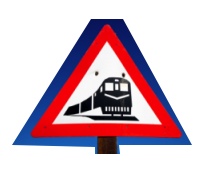Spring Reading
The other day, over a hot corned beef sandwich from the 2nd Avenue Deli, someone asked what I’m reading now. As usual, I ended up mumbling a few half complete book titles (not sure why, but I always have difficulty remembering on the spot – probably because I’ve got four or five things going at once…).
To help fill out the list, and because I’m still doing most of my writing via other outlets, here’s a snapshot of the books scattered around my house. It’s divided into helpful categories, including ‘Books I’d Like To Start Reading Soon, But Shouldn’t, Because I’m Still Reading Other Stuff’, and ‘Books I’ve Been Meaning to Read Sometime Soon, But Probably Won’t Won’t Get To In The Near Future.’
Books I’m Reading Now
- This Is Your Brain On Music: The Science of a Human Obsession. Daniel Levitin
- Critical Mass: How One Things Leads To Another. Philip Ball
- Everyware: The Dawning Age of Ubiquitous Computing. Adam Greenfield
- Pulse. The Coming Age of Systems and Machines Inspired by Living Things. Robert Fresnay
- The River Cottage Meat Book. Hugh Fearnley-Whittingstall
- In Praise Of Barbarians: Essays Against Empire. Mike Davis
Books I’d Like To Start Reading Soon, But Shouldn’t, Because I’m Still Reading Other Stuff
- Maximum City. Suketu Mehta
- Atlas of Novel Tectonics. Reiser + Umemoto
- Failure: Experiments in Aesthetic and Social Practices. Various
- Istanbul: Memories of A City. Orhan Pamuk
- Uncany Networks. Geert Lovink
- The Shock Doctrine. Naomi Klein
Books Recently Finished
- Sailing to Byzantium. Robert Silverberg
- A Cook’s Tour: Global Adventures in Extreme Cuisine. Anthony Bourdain
- The Laws of Simplicity. John Maeda
- Buda’s Wagon. Mike Davis
- The Omnivore’s Dilemma: A Natural History of Four Meals. Michael Pollan
- The Sushi Economy: Globalization and the Making of a Modern Delicacy. Sasha Issenberg
- The Thackery T. Lambshead Pocket Guide to Eccentric & Discredited Diseases. Mark Roberts, Jeff Vandermeer
Books I’ve Been Meaning to Read Sometime Soon, But Probably Won’t Get To In The Near Future
- A Thousand Plateaus. Gilles Deleuze, Felix Guattari
- Hackers and Painters. Paul Graham
- Leonardo’s Laptop. Ben Schneiderman
- Emergence. Stephen Johnson
- In The Bubble. John Thackarra
- The Direction of Cities. John Guinther
- Home: A Short History of an Idea. Witold Rybczynsk
Bonus: Things I’m probably Never Going to Start / Finish Reading
- Women Fire and Dangerous Things. George Lakoff
- Flow: The Psychology of Optimal Experience. Mihaly Csikszentmihalyi
